Olympus M.Zuiko Digital ED 25mm f/1.2 PRO Review

Introduction
The new Olympus M.Zuiko Digital ED 25mm f/1.2 PRO lens was announced at Photokina in September 2016, alongside two other PRO lenses, a 12-100mm f/4 IS PRO and an ED 30mm f/5.6 Macro. Designed to be used by high-end enthusiast or professional users, the 25mm lens is a very fast standard prime which gives you an equivalent of 50mm. Olympus promises that the lens construction gives exceptional edge-to-edge sharpness, with the removal of virtually all types of aberration and fringing. Autofocus is designed to be quick and precise, while bokeh is beautiful. The Olympus M.Zuiko Digital ED 25mm f/1.2 PRO lens is also dustproof and waterproof, making it appealing for those working with cameras such as the OM-D E-M1 Mark II. The Olympus M.Zuiko Digital ED 25mm f/1.2 PRO costs £1099 / $1199.
Ease of Use
The Olympus M.Zuiko Digital ED 25mm f/1.2 PRO lens is reasonably large in Micro Four Thirds terms, but it is well matched with some of the larger cameras in the Olympus range, with an obvious partner being the OM-D E-M1 Mark II. The lens is noticeably larger than 25mm f/1.4 lenses, but given the extra aperture width, this isn’t too surprising.
 The Olympus M.Zuiko Digital ED 25mm f/1.2 PRO lens alongside an Olympus OM-D E-M1 Mark II
The Olympus M.Zuiko Digital ED 25mm f/1.2 PRO lens alongside an Olympus OM-D E-M1 Mark II
 The Olympus M.Zuiko Digital ED 25mm f/1.2 PRO lens alongside an Olympus OM-D E-M1 Mark II
The Olympus M.Zuiko Digital ED 25mm f/1.2 PRO lens alongside an Olympus OM-D E-M1 Mark II
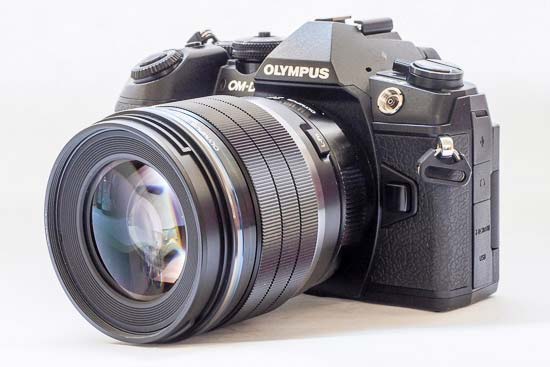 The Olympus M.Zuiko Digital ED 25mm f/1.2 PRO lens alongside an Olympus OM-D E-M1 Mark II
The Olympus M.Zuiko Digital ED 25mm f/1.2 PRO lens alongside an Olympus OM-D E-M1 Mark II
As this is a Micro Four Thirds lens, you can also use it with Panasonic cameras - its design, size and weight would make it a good partner for something like the Panasonic GH5.
The weightiness, along with the solid metal construction of the Olympus M.Zuiko Digital ED 25mm f/1.2 PRO lens gives you a good indication that this is a quality piece of kit. There is a red dot at the back of the lens to help you line it up with the lens mount on the camera you’re using.
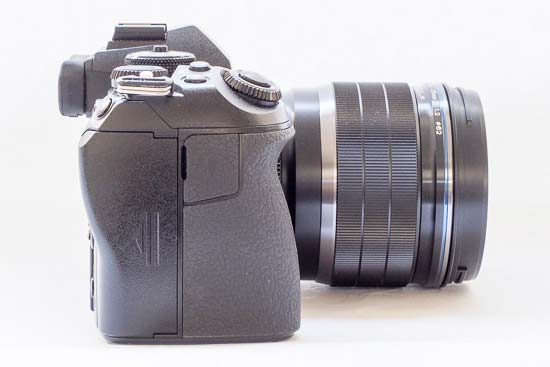 The Olympus M.Zuiko Digital ED 25mm f/1.2 PRO lens alongside an Olympus OM-D E-M1 Mark II
The Olympus M.Zuiko Digital ED 25mm f/1.2 PRO lens alongside an Olympus OM-D E-M1 Mark II
 The Olympus M.Zuiko Digital ED 25mm f/1.2 PRO lens alongside an Olympus OM-D E-M1 Mark II
The Olympus M.Zuiko Digital ED 25mm f/1.2 PRO lens alongside an Olympus OM-D E-M1 Mark II
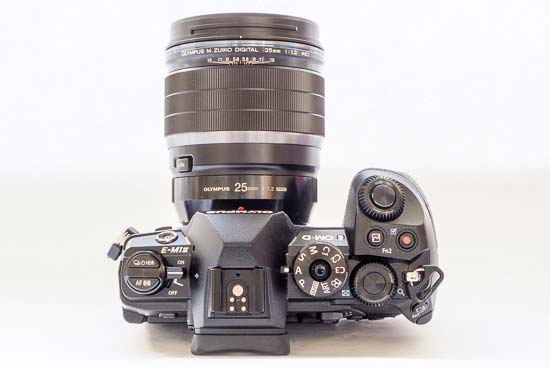 The Olympus M.Zuiko Digital ED 25mm f/1.2 PRO lens alongside an Olympus OM-D E-M1 Mark II
The Olympus M.Zuiko Digital ED 25mm f/1.2 PRO lens alongside an Olympus OM-D E-M1 Mark II
There is a large ring around the lens, which you can use when manually focusing the lens. You can snap back the lens to change from autofocus to manual focus in an extremely quick motion, snapping it back again if you want to switch back to using autofocus. When in the manual focus position, you'll see focal distances compared with the relevant apertures are displayed.
When in autofocus mode, the focusing ring is very loose and doesn’t do anything, but when snapped into the manual focus mode, there’s a lot more resistance, leading to a pleasing and smooth focusing experience.
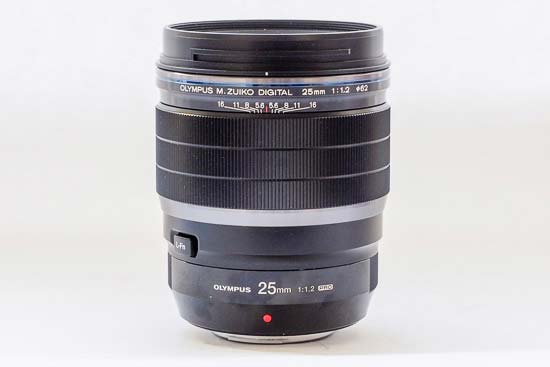 Side of the Olympus M.Zuiko Digital ED 25mm f/1.2 PRO lens
Side of the Olympus M.Zuiko Digital ED 25mm f/1.2 PRO lens
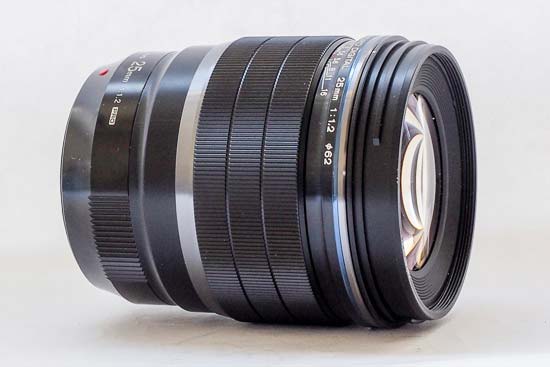 Side of the Olympus M.Zuiko Digital ED 25mm f/1.2 PRO lens
Side of the Olympus M.Zuiko Digital ED 25mm f/1.2 PRO lens
Just below the focusing ring is a function button, marked L-Fn, which can be customised via the camera’s main menu to control a number of different actions. One useful function is depth of field preview - this allows you to see how your image will look at the selected if you hold down the button, and is particularly handy when working in narrow apertures.
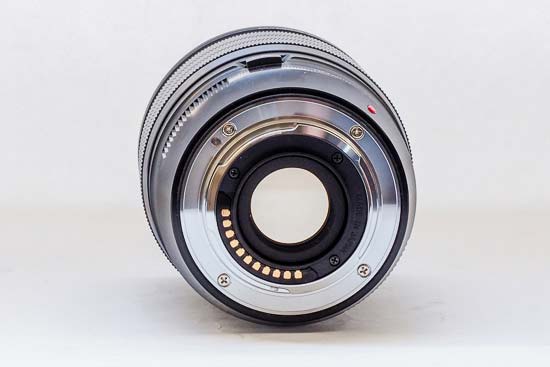 Rear of the Olympus M.Zuiko Digital ED 25mm f/1.2 PRO lens
Rear of the Olympus M.Zuiko Digital ED 25mm f/1.2 PRO lens
The Olympus M.Zuiko Digital ED 25mm f/1.2 PRO lens has a 62mm filter, and weighs in at 410g. A lens hood is supplied in the box if you’re shooting in bright conditions and want to shield the lens from direct sunlight.
Optical image stabilisation is not a feature of the Olympus M.Zuiko Digital ED 25mm f/1.2 PRO lens, but cameras such as the OM-D E-M1 Mark II feature in-camera stabilisation systems which you can use instead.
Focal Range
At the 25mm focal length, the angle of view is 47 degrees, with an equivalent focal length (35mm terms) of 50mm.
 Field of view at 25mm
Field of view at 25mm
Focusing
The focusing ring is arguably the main feature of the Olympus M.Zuiko Digital ED 25mm f/1.2 PRO lens’s design. There are hard stops at either end of the range, meaning you can easily set focusing to infinity quickly. The filter thread doesn’t move when focusing, which is good news for those using polarisers.
For autofocusing, the Olympus M.Zuiko Digital ED 25mm f/1.2 PRO lens is a very quick performer, locking onto the relevant subject almost instantaneously. It also copes well with darker lighting conditions, without too much hunting. It’s also very quiet in operation, making it good to use with a silent shutter in quiet environments, or for candid shots.
Chromatic Aberrations
The Olympus M.Zuiko Digital ED 25mm f/1.2 PRO lens does an extremely good job of keeping chromatic aberrations under control. It was extremely difficult to find any examples of purple fringing occurring, but it’s possible to see some very slight examples of it in an image where the camera has been pointed directly at a very bright light source (the sun). While it’s possible to find it if you look very closely at 100%, at normal printing and web sizes, it’s unlikely you’d see it, while most pictures are completely unmarred.
 |
 |
Light Fall-off and Distortion
When shooting wide open at f/1.2, some obvious light fall-off is visible in the corners, particularly when shooting a white wall. The effect is lessened by f/1.4, and again by f/2.0. By f/2.8 it’s completely gone in JPEG images, with some slight shading visible in the raw file. You’re far less likely to notice any light fall off, even when shooting at the maximum aperture, when it comes to normal subjects. There’s almost no distortion visible in either the RAW files or the JPG files.
 Vignetting at f/1.2
Vignetting at f/1.2
 Distortion
Distortion
Macro
The Olympus M.Zuiko Digital ED 25mm f/1.2 PRO lens offers a minimum focusing distance of 0.3 metres and a maximum image magnification of 0.11x (0.22x in 35mm terms). It’s not a true macro lens, but you can get relatively close to the subject, and thanks to the wide aperture, it makes for a good choice for traditional macro subjects, such as flowers.
 Close-up performance
Close-up performance
Bokeh
Bokeh is the term to describe the out-of-focus areas in an image. It can be described in various terms, including smooth, creamy, beautiful, harsh etc. The lens design comprises of 9 circular aperture diaphragm blades which results in a rounded and natural and pleasing looking bokeh. Bokeh evaluation can be extremely subjective however, so we’ve included some examples for you to judge for yourself.
 |
 |
 |
 |
Sharpness
In order to show you how sharp this lens is, we are providing 100% crops on the following page.
